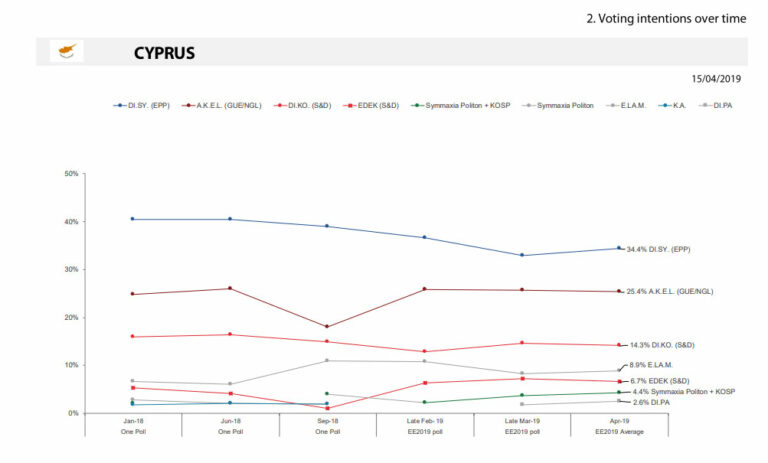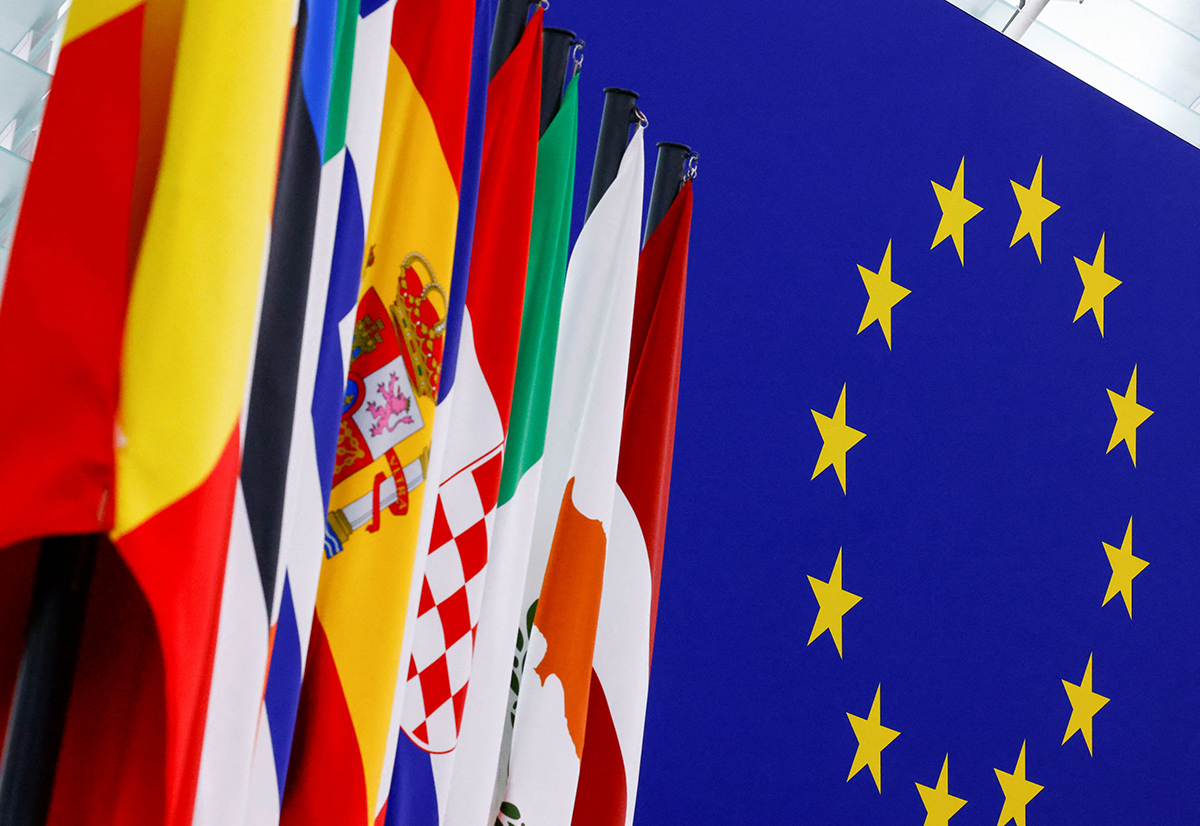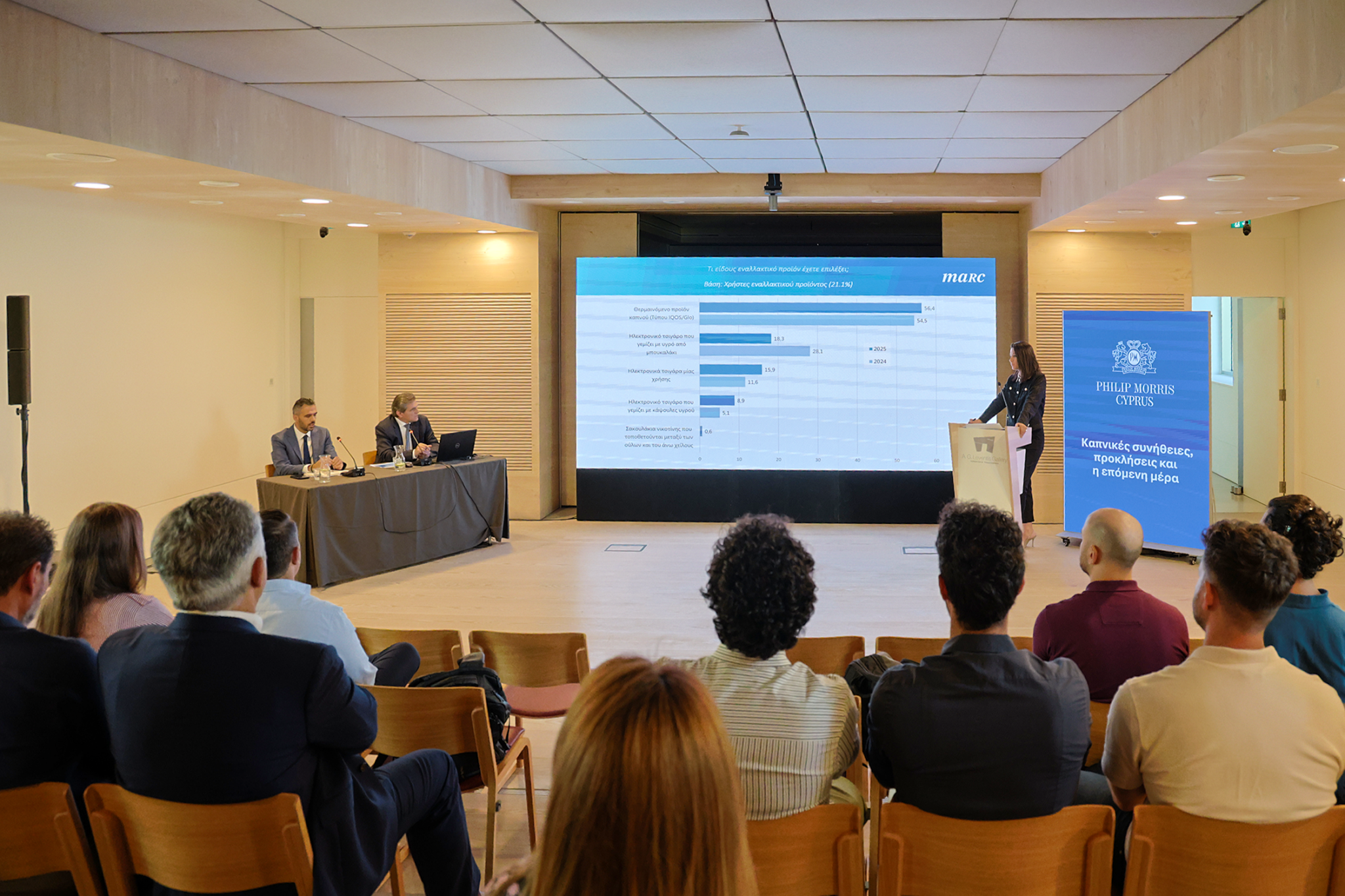2 MEPs each for Disy and Akel, one each for Edek and Elam according to new EP seat projection The latest poll of polls for May’s European Parliament election show Disy emerging as the biggest party with 34.4% and electing two MEPs.
Akel places second with 25.4% and is seen as retaining its two seats in the EP. With 14.3%, Diko is third and is projected to win one seat.
Far right Elam is seen as winning a battle with Edek for fourth place and the sixth seat. The far right party notches up 8.9% and Edek 6.7% which mean the socialist party loses its current seat.
Trailing in fifth place is the alliance of the Greens with the Citizen’s Alliance with 4.4% while the newly-formed Democratic Movement (Dipa) set up by former Diko president Marios Garoyian has 2.6%. Other parties garner 3.6% between them.
The poll of polls and the seat projection is based on two public opinion polls – one carried out by Symmetron Market Research and released on April 14 and the second by IMR/University of Nicosia released on April 4.
The EU survey showed that British voters at the elections for the next European Parliament would strengthen Eurosceptic groups, while the centre-right would remain the largest grouping in the legislature.
The projection, commissioned by the European Parliament, showed that the two most eurosceptic groups in the parliament would increase their share of seats to 14.3% of the total compared with 13.0% in the previous survey from March which did not include British voters.
The survey included national polls published up to April 15.
Under the new survey, which assumes the number of seats in the next parliament will remain 751 instead of dropping to 705 after Brexit, the centre-right European People’s Party would remain the largest, but its share of seats would fall to 24.0% from 26.7% forecast in March.
The data are based on a collection of reliable polls conducted by national polling institutes in the member states and aggregated by Kantar Public on behalf of the European Parliament.
The data from the previous projection, published on 29 March, have also been updated to recalibrate with UK data to facilitate comparison with the new scenario of the UK participating in May’s elections.
Parties are only allocated to existing political groups or where they are already affiliated to an associated European political party. All new political parties and movements that have not yet declared their intentions are categorised as “other”.
All data can be downloaded from the press tool kit. The European elections will take place from May 23 to 26.
















